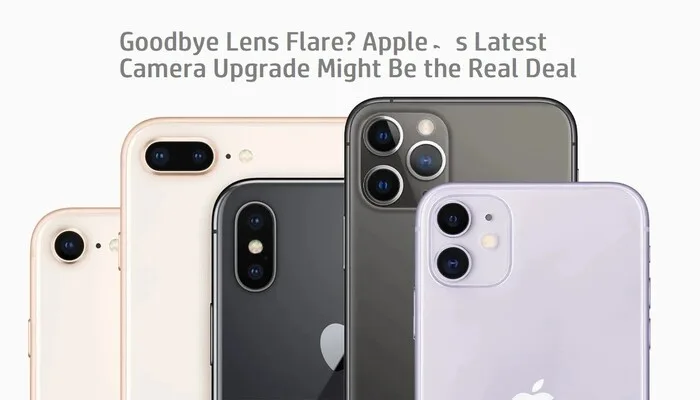Apple may finally be closing in on a real fix for one of the iPhone camera lens flare issues that has frustrated users for years. A newly published patent from the U.S. Patent and Trademark Office outlines a novel approach using micro-scale optically absorptive gratings to reduce unwanted light artifacts in future iPhone camera modules—possibly beginning with the iPhone 17 Pro.
The Longstanding Problem with Lens Flare
Lens flare is a common issue in iPhone photography. It typically appears when a bright light source, such as streetlights or the sun, enters the camera lens at a sharp angle. This causes distracting reflections and ghostly orbs that even post-editing tools can’t always remove. Despite repeated feedback from users, the problem has persisted across multiple iPhone generations.
In 2021, the Dogcow-Moof report cataloged flare issues across various models. Hopes were raised in 2024 when rumors hinted at a new coating being tested for the iPhone 16 Pro. However, upon launch, users confirmed the flaw still existed. Now, Apple’s patent signals renewed efforts toward a permanent hardware solution.
Read: Can AI Think Like Humans? New ‘Machine Memory’ Framework
What the Patent Reveals
The new patent centers around a redesigned camera system that incorporates micro-structured gratings to combat flare at the source. The proposed design includes:
-
An image sensor
-
An optical assembly (such as a lens or prism)
-
A grating assembly featuring absorptive structures placed on a transparent substrate
These gratings are shaped like pyramids, cones, or triangular ridges, arranged in fine arrays. Each microstructure is engineered to trap and absorb stray light rays that enter the lens at problematic angles. By doing so, they prevent internal reflections that typically cause lens flare.
In some configurations, the grating sits close to the optical component, separated by an air gap. The optical assembly itself uses total internal reflection to guide desirable light into the sensor, while the grating neutralizes any off-angle rays.
Each micro-protrusion can be at least 15 microns tall and is optimized to absorb specific wavelengths, acting like tiny black holes for flare-causing light.
What It Means for Future iPhones
Although the patent doesn’t confirm use in a specific model, the timing aligns with Apple’s ongoing camera enhancements in its Pro devices. After disappointment with the iPhone 16 Pro’s failure to resolve the flare issue, many users are now eyeing the iPhone 17 Pro for a meaningful upgrade.
The patent shows a shift in Apple’s strategy—from relying on lens coatings and software fixes to embracing micro-structural solutions at the hardware level. If deployed, this could be a game changer for night photography, cityscapes, and cinematic videography—scenarios where lens flare is most visible and disruptive.
What’s Next?
While patents don’t always guarantee product deployment, they do signal intent. This filing suggests Apple is serious about tackling lens flare head-on, offering hope to photographers and casual users alike. Whether it arrives in the iPhone 17 Pro or another device, this breakthrough could dramatically improve mobile image quality in challenging light conditions.
Follow us on Google News, Instagram, YouTube, Facebook,Whats App, and TikTok for latest updates
